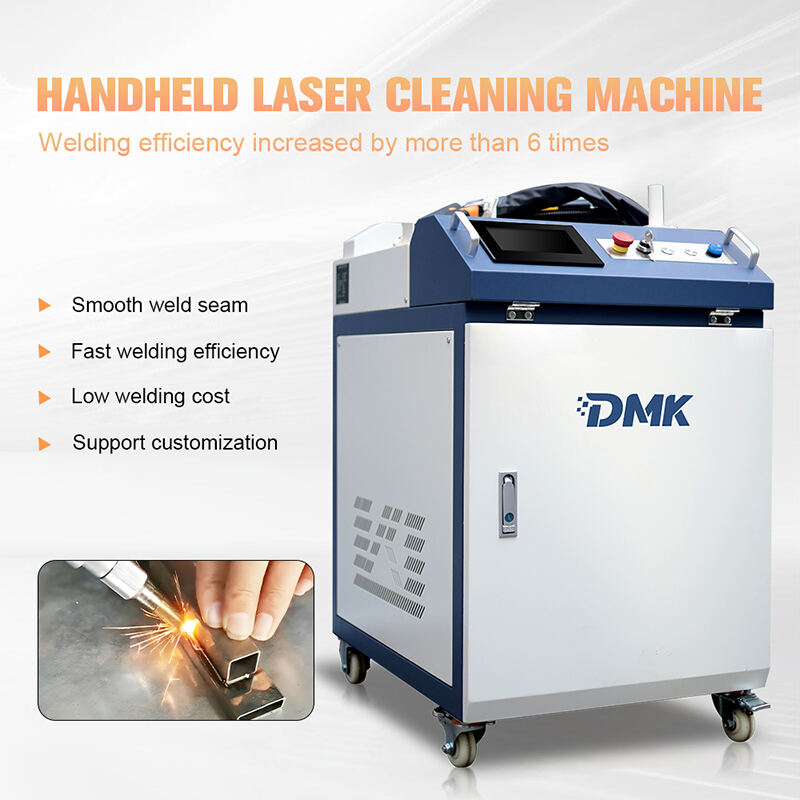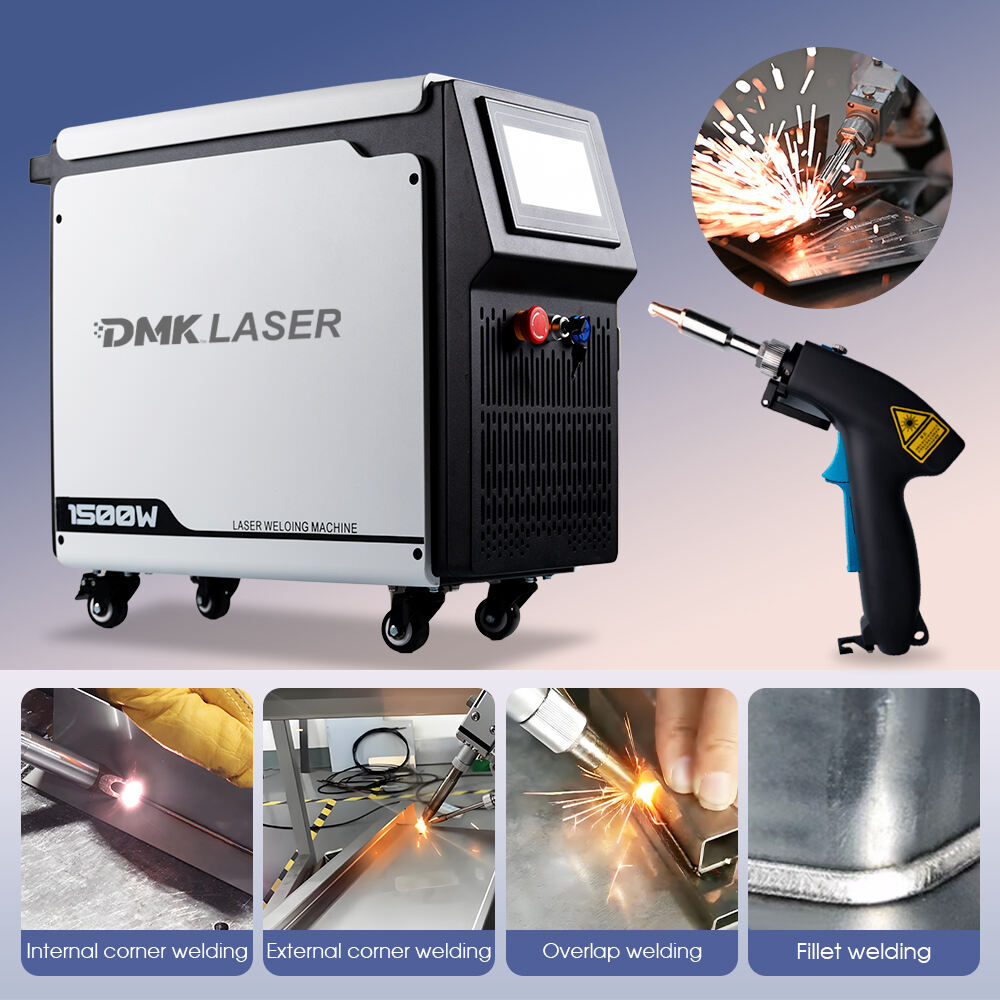Key Features of Laser Welding Machines You Should Know
Understanding Laser Welding Machines
A laser welding machine is advanced equipment designed to join materials via focused laser beams. It leverages the high precision and speed of laser technology to create strong, clean welds on a variety of materials. These machines are ideal for applications requiring minimal distortion and high production efficiency.
In terms of components, laser welding machines typically consist of the laser source, which generates the laser beam; optics, which focus and direct the beam; and control systems, which manage the operation parameters. Together, these elements work harmoniously to ensure precise welds and optimize the welding process for various industrial needs.
Key Features of Laser Welding Machines
Laser welding machines are renowned for their precision and efficiency, offering significant advantages over traditional welding methods. These machines can achieve an accuracy level that surpasses conventional techniques, thanks to the focused laser beams that create precise welds with minimal distortion. Statistics show that laser welding can achieve a precision level of around 0.02mm, making it ideal for complex assemblies where detail is paramount.
One of the standout features of laser welding machines is their speed of operation. By reducing cycle times dramatically, these machines enable faster production rates. Laser welding technology achieves speeds up to four times faster than traditional methods, translating into increased productivity and reduced labor costs. This efficiency is particularly beneficial in high-volume manufacturing environments where time is of the essence.
In addition to precision and speed, laser welding machines are highly versatile in their material applications. They can effortlessly weld a wide range of materials, including various metals and alloys such as stainless steel, aluminum, and titanium. This versatility makes laser welding suitable for diverse industrial applications, from aerospace components to automotive parts, allowing manufacturers to adapt to different project requirements without the need for multiple welding systems.
These key features—precision, speed, and versatility—make laser welding machines an indispensable tool in modern manufacturing industries, helping to enhance productivity and product quality.
Benefits of Using a Laser Welding Machine
Laser welding machines offer a significant advantage by reducing the heat-affected zone (HAZ) during the welding process, which is crucial in preserving material properties. Traditional welding methods often cause extensive heat diffusion, which can alter the physical and mechanical characteristics of the materials involved. In contrast, the precision of laser welding ensures that only the immediate vicinity of the weld is affected, minimizing the risk of heat-induced material degradation.
Another notable benefit of laser welding technology is the minimal post-processing required. Many case studies highlight how this aspect leads to reduced finish work, saving both time and resources. For example, the clean and precise welds produced by laser machines often eliminate the need for further grinding or smoothing, streamlining production workflows and reducing overall costs.
Moreover, enhanced weld strength and quality are among the most critical benefits of using laser welding machines. Research consistently shows that laser-welded joints have lower defect rates compared to those created using conventional welding methods. This high-quality result is due to the precise control over the welding process, which minimizes the occurrence of common welding defects like porosity or cracking. As a result, businesses can rely on laser welding for critical applications where integrity and durability are paramount.
Applications of Laser Welding Machines
The automotive industry is increasingly adopting laser welding technology, using it for critical applications such as structural and high-demand components. According to industry reports, this adoption is driven by the need for precision and efficiency in manufacturing processes. Laser welding offers significant advantages, including reduced weight and enhanced strength of automotive parts, thereby supporting the development of more fuel-efficient vehicles. Its ability to join dissimilar metals without compromising their properties is particularly valuable in the production of electric vehicles, where it helps in battery and electronic component assembly.
In the aerospace sector, laser welding is crucial for precision tasks, ensuring safety and performance in aircraft assembly. The demand for high-quality, consistent welds in this industry is unparalleled, as any failure could have catastrophic consequences. Laser welding machines provide the precision required to meet stringent aerospace standards, making them an indispensable tool. Notably, it's used in the fabrication of fuel tanks, engine components, and airframe structures, where weld strength and integrity are critical.
Additionally, laser welding is essential in the medical device manufacturing industry due to its ability to produce clean, precise welds that comply with rigorous regulatory standards. Medical devices often require miniature components to be welded together with high accuracy, and laser welding meets these demands efficiently. It ensures the sterilization and quality of medical instruments, implants, and surgical tools, improving both reliability and safety. The minimal heat input during the process reduces distortion and preserves the essential characteristics of sensitive materials, supporting the production of delicate medical pieces.
Overview of Popular Laser Welding Machines
The DMK 2000W Handheld Fiber Laser Welding Machine is a high-power, advanced tool designed for a range of welding applications. This machine features a high-quality fiber laser source that produces a focused beam for precise and continuous welding. Its handheld design replaces the traditional fixed light path, making it ideal for both indoor and outdoor welding tasks. The machine excels in welding various metal materials like stainless steel and aluminum, delivering superior joint strength and quality without the drawbacks of thermal strain and post-treatment processes.

The DMK 1500W Air-cooling Portable Handheld Fiber Laser Welding Machine stands out for its portability and efficient performance. The machine is compact, with a lightweight design, weighing only 54Kg, making it easy to transport and handle. It is equipped with a precise laser control system that enhances both the stability and quality of welds. Additionally, its high welding speed and smooth finish significantly reduce the time and cost involved in post-weld processes, making this machine an efficient option for welding a broad range of metal materials.

FAQ
What are the main components of a laser welding machine?
The main components of a laser welding machine include the laser source, optics to focus and direct the beam, and control systems to manage operation parameters.
How fast can laser welding machines operate compared to traditional methods?
Laser welding machines can operate up to four times faster than traditional welding methods, significantly increasing productivity.
What materials can be welded using laser welding machines?
Laser welding machines can weld a wide range of materials including stainless steel, aluminum, titanium, and various alloys.
Are laser welding machines environmentally friendly?
Yes, laser welding machines are pollution-free and environmentally friendly, often producing less waste and reducing the need for consumables.
What industries benefit most from laser welding technology?
Industries such as automotive, aerospace, and medical device manufacturing benefit significantly from the precision and versatility of laser welding technology.

 EN
EN
 AR
AR CS
CS NL
NL FR
FR DE
DE IT
IT JA
JA KO
KO PL
PL PT
PT RU
RU ES
ES UK
UK TH
TH TR
TR